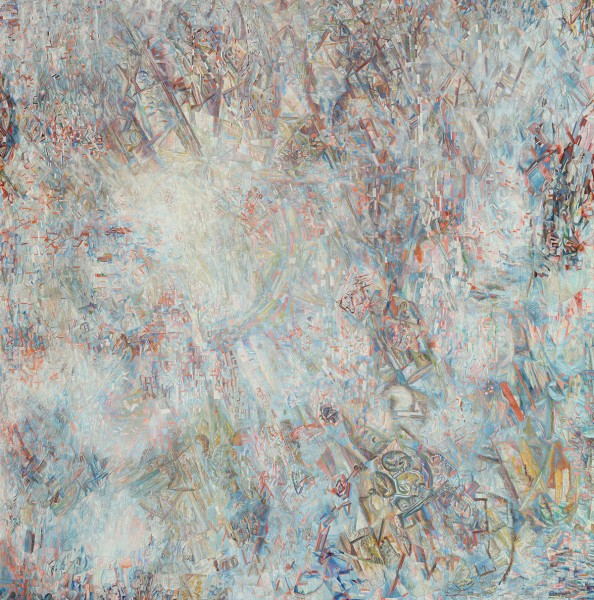The artist is Filonov

The tragic events in Russia of the mid-1900s and the first half of the 1910s-the execution of the 1905 peaceful demonstration, the defeat in two wars-with Japan and in the First World War-brought the inevitability of the revolutionary events of 1917 brought closer. Many writers, artists, philosophers since the 1900s warned about the impending hurricane since the 1900s. And even then the hope of uniting the democratic forces of Russia with international fighters for social justice sounded.
The idea of world unity of all peoples in the struggle against the bourgeoisie before others in the visual arts was expressed by Pavel Filonov. Already in 1915, he paints from the cycle “Introduction to the World Blows”.
In the fall of 1916, Filonov was mobilized and sent to the Romanian front by the ordinary of the Second Naval Regiment of the Baltic Maritime Division. In the February Revolution, he was elected chairman of the Soldier Congress in the city of Izmail, and then the chairman of the executive military revolutionary committee of the Pedanay Territory. After the liquidation of the front, Filonov returns to Petrograd and transfers to the chairman of the military revolutionary committee.AND. Podvoisky banners of the three regiments of the Baltic division. In 1918, Filonov was actively included in the artistic life of the revolutionary capital. In 1919, he participated in a grandiose exhibition, which opened in the Winter Palace, a cycle of paintings “Entering in the world flowering”. Participates in the organization of the Institute of Artistic Culture and in 1923 heads the department of general ideology in it. The twenties were a time of high rise and creative activity of the artist. He creates a cycle of works dedicated to the civil war, revolution, and the Petrograd proletariat.
Pain of Pavel Filonov “Formula of the period 1904. to July 1922 ”, having the second name:“ Ecumenical shift through the Russian revolution in world flowering ”is the most expressive reflection in the painting of what happened in Russia and the world.
On the plane of the canvas, the artist depicts an explosive pulsation of the universe as a formula image of a revolution. He analyzes the world literally to atoms, and then allows him to get together from them again. The picture plane is turned into the dynamic interaction of the flows of analytical particles having simple geometric outlines. Foggy, covering the space of the canvas spots are perceived as the consequences of the revolutionary explosion, shaking the country, smoke and fragments of it that was scattered through it, changing the world order of society.
Filonov himself, unfortunately, did not leave descriptions of his paintings. His early diaries have not been preserved. However, his wife, Ekaterina Serebryakova, sometimes recorded her thoughts about the artist’s paintings, which most likely not only coincided, but reflected the attitude of Filonov himself to them.
“What a strong dynamics,” she writes about the picture dedicated to the revolution, “it seems that the canvas will smash it into all parts.”.
Indeed, this work of Filonov, like no other in Russian art, corresponds to the statements of the revolution of the best writers of that time: “As an underground blow that breaks everything, a revolution appears; appears to be a hurricane that sweeps the form; The revolution resembles nature: a thunderstorm, flood, waterfall; Everything in it hits „over the edge “everything is overly,” wrote Andrey Bely.